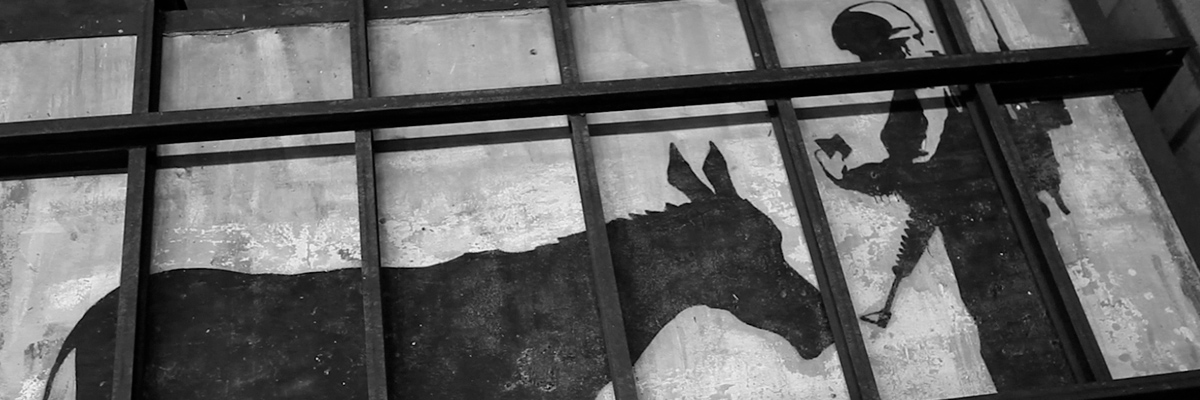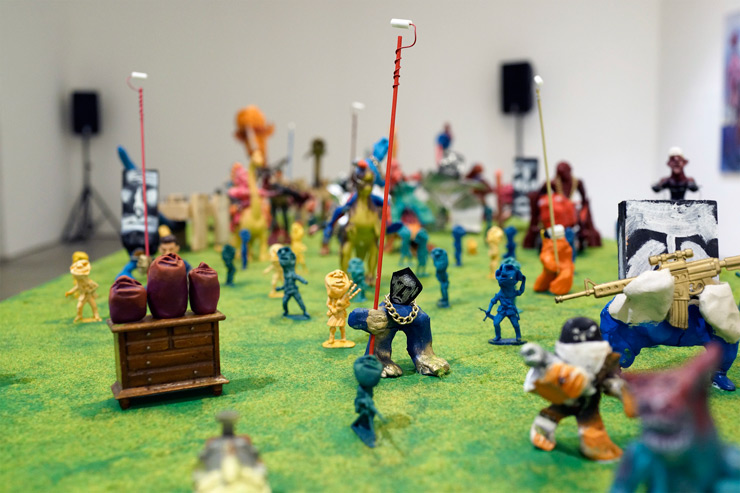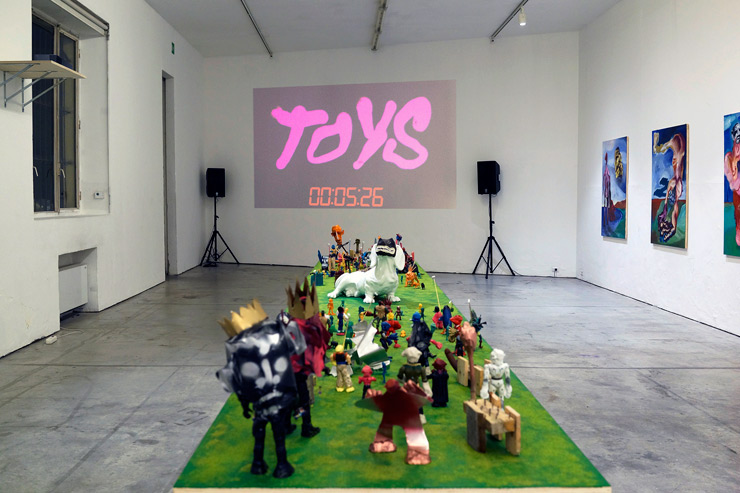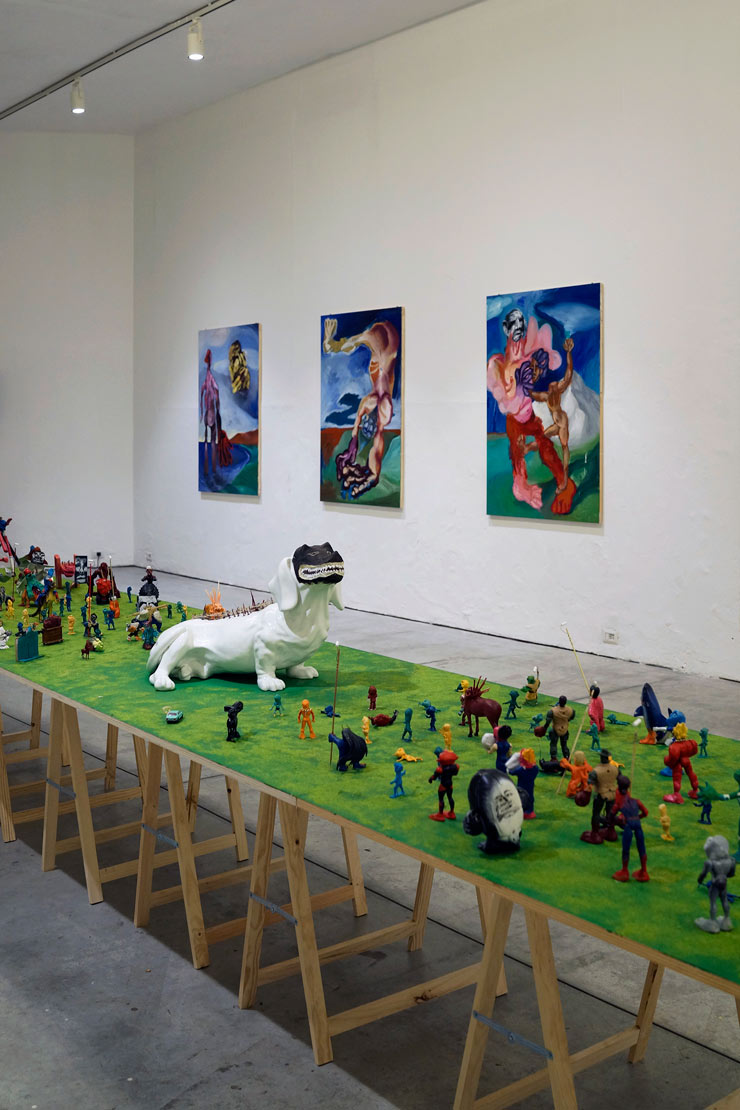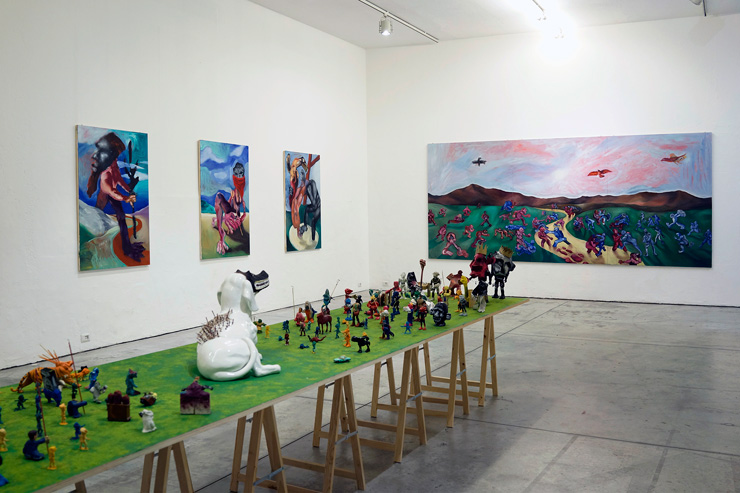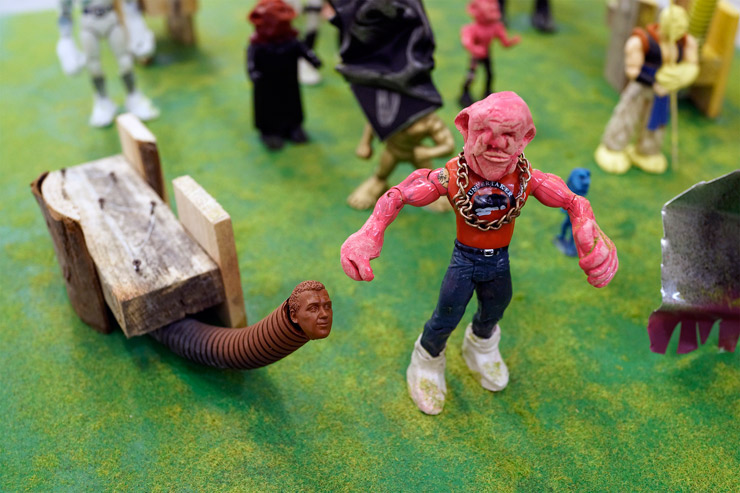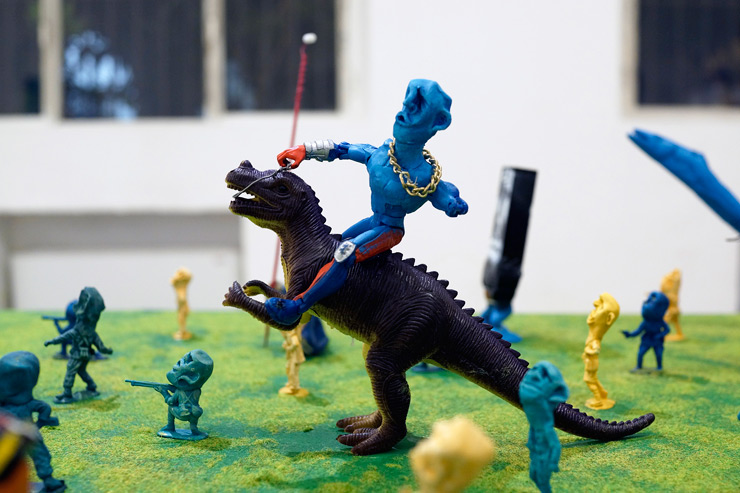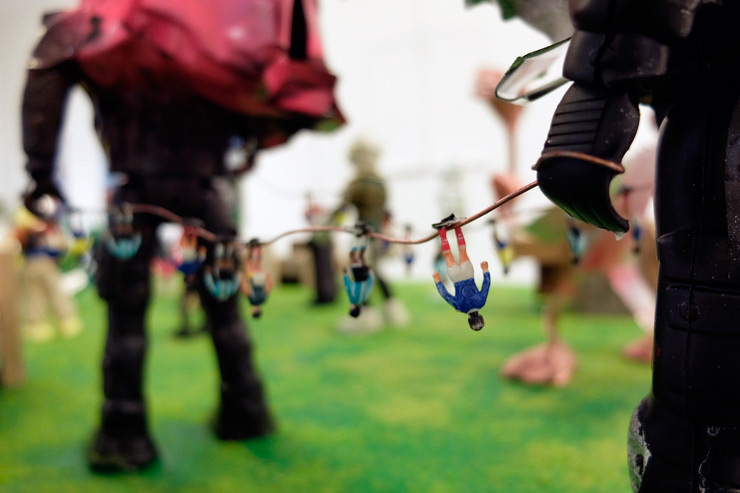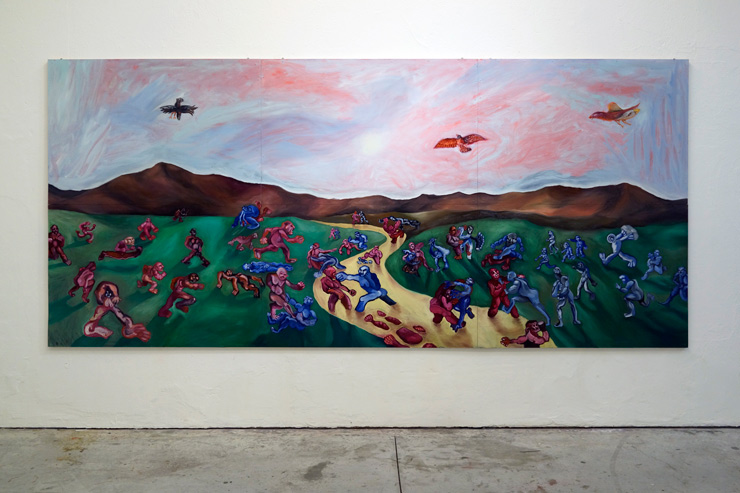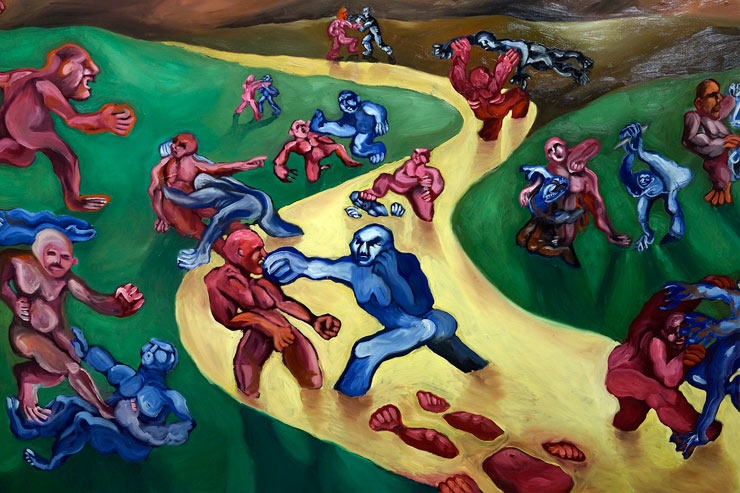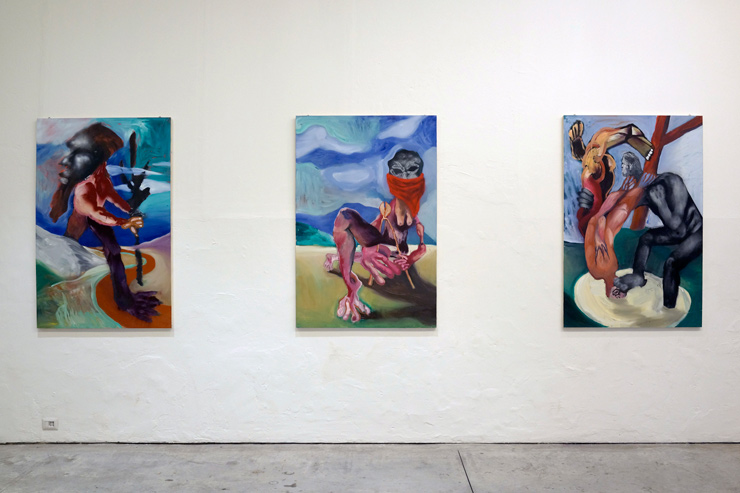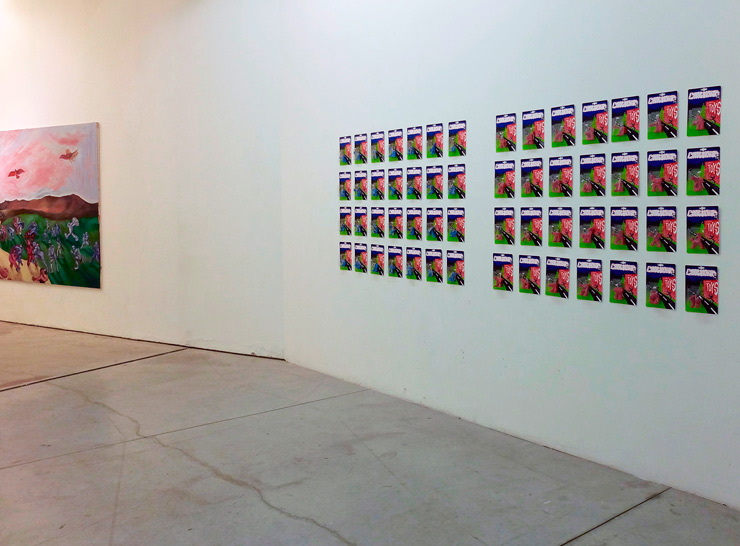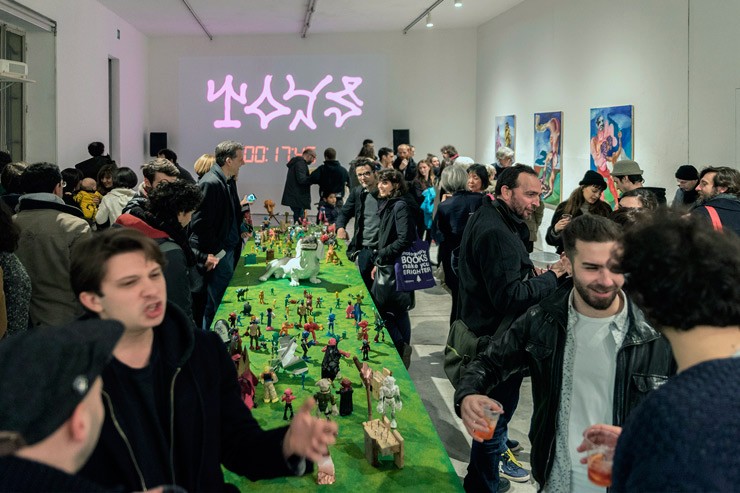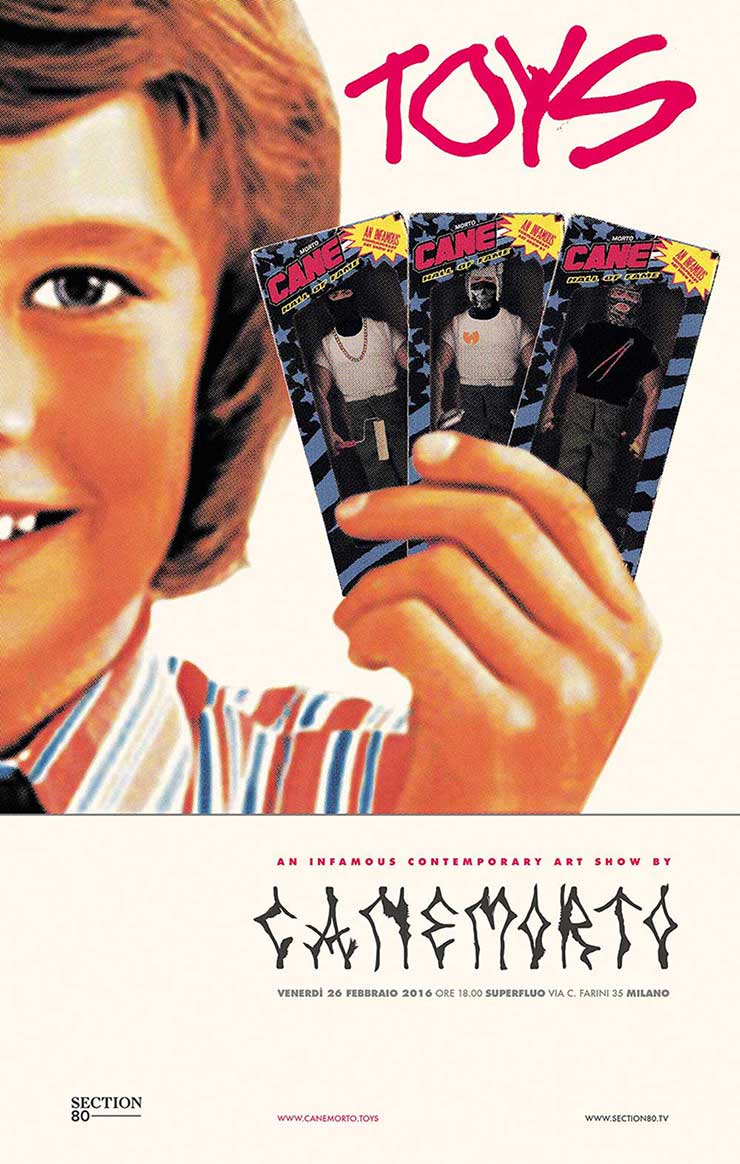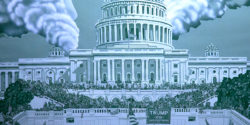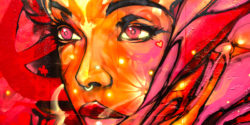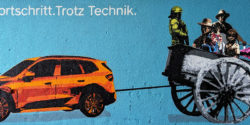In 2007 the anonymous graffiti artist Banksy painted a series of political works around Palestine.
Later there was a mad scramble by people to cut them down and to sell them to the highest bidder on a secretive and clandestine art market. One mural in particular that depicts an Israeli soldier asking a donkey for its papers created a furious response from many. It also sparked its removal – and eventual offer for sale.
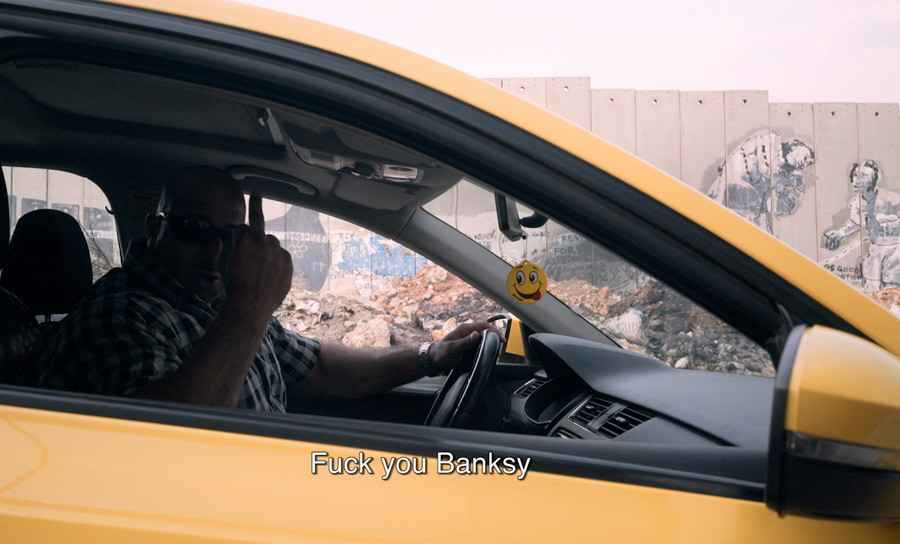
An unexpected and riveting tale told through the perspective of a local taxi driver named Walid, the offending wall becomes the main character; shuffled through chaotic Bethlehem streets, ferried across the sea, featured at auction, brandished for collectors. The prejudices, perspectives, and startling insights on display never stop revealing themselves. Needless to say war, pacifism, greed, celebrity, fanboy-ism
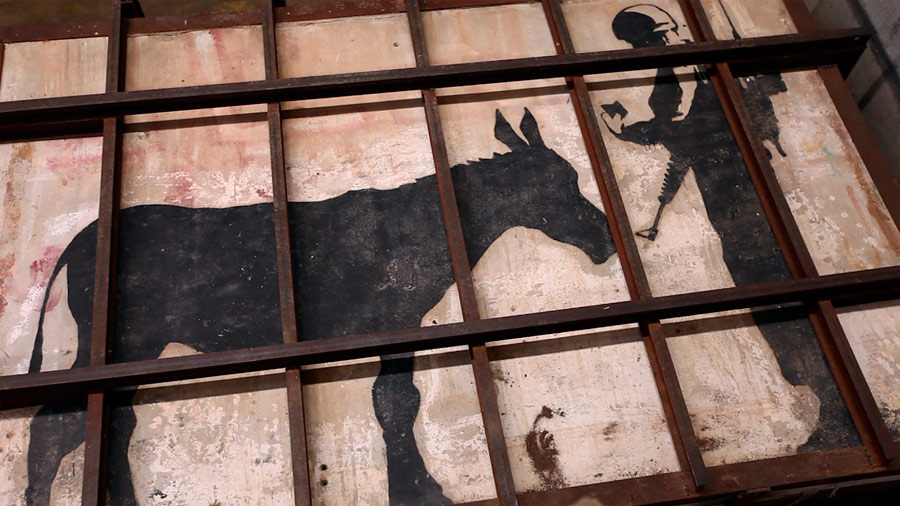
“One year after we saw

BSA: Can you describe your role in the film, and how you watched it grow and mature?
Christian Omodeo: I first met Marco Proserpio in 2012 and we were working on this project until 2017. Marco was just back from Palestine, where by chance he met Walid, the main character of the movie. Walid told him that he had cut a Banksy painting with the intention of selling it on
He also wanted to describe the political situation in Palestine without portraying this community as victims as most of the media do. At the same
We traveled a lot and interviewed many people over a period of 5 years. In the end, we had enough footage to release 3 movies! While working on it our point-of-view on this story has totally changed. Looking at street art from a Palestinian point of view, while the Western art market was definitely consecrating it, gives you a totally different perspective on things.
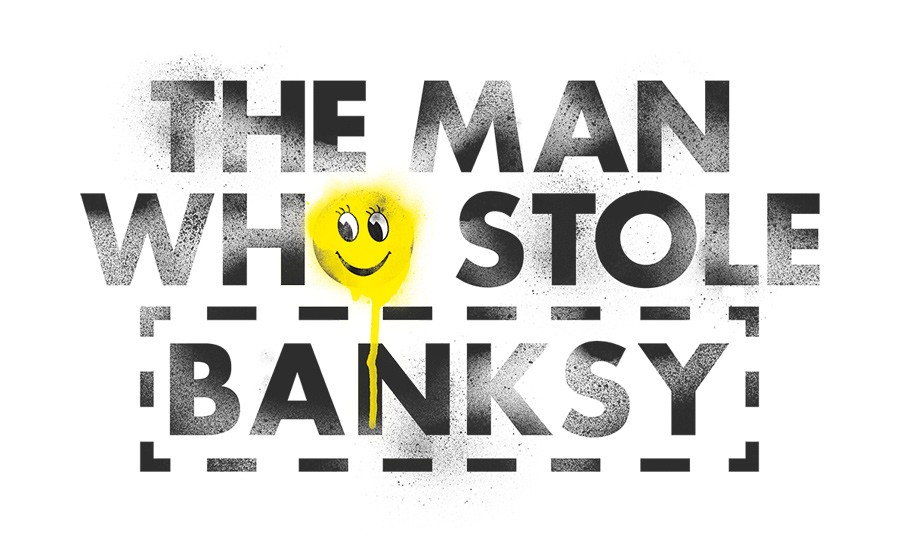
This is something that has also been fundamental for me as a curator, pushing me to a more radical attitude towards the commodification of street art. Between 2012 and 2017, while new self-proclaimed “museums” of street art were popping out everywhere, I started to think about what a museum of street art should be and if it makes sense to put street art into a museum. I was seeing many nice collections of well-hung canvases, but this way of building up a street art narrative seemed to me to be very reductive, in parallel of what we were doing within the movie.
This is how my role on this project has changed from being only an author, I became an actor in the role of the curator of the Bologna’s exhibition which became known worldwide due to the reaction of the artist Blu – who defaced his walls in the city in response. People have mainly focused on Blu’s reaction against the foundation that financed the show, without looking at what was happening inside the museum – as well as seeing the new street art narrative we were putting together.
The movie shows this story at the end, but such a topic is so powerful than it would be for the movie or another interview!
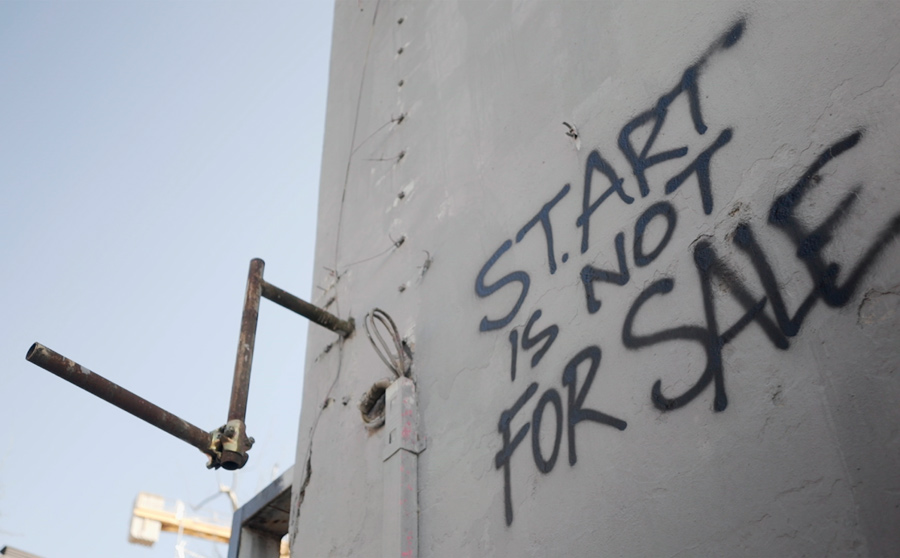
BSA: The movie first appeared on the art film festival circuit a year ago. Now it is going to reach a far greater audience than that narrow selection of people. It more accurately mirrors the audience that street art is made for, no?
Christian Omodeo: Of course! We are happy to see the movie reaching a larger audience. This is what this movie was supposed to do since the beginning. We did not do it simply for a bunch of lazy ‘film buffs’ and festival “arty
BSA: The story appears rather simple on the surface but then opens up to layers of complexity with themes of challenging power, revolution, commercialism, colonialism… How has your perception of the film changed since you first made it?
Christian Omodeo: It has not changed at all. It’s normal to me – it took me less time and effort to discuss a Ph.D. at the Paris-Sorbonne University than to work on this movie. This is why, at the end of the process, we felt quite sure of our conclusions.
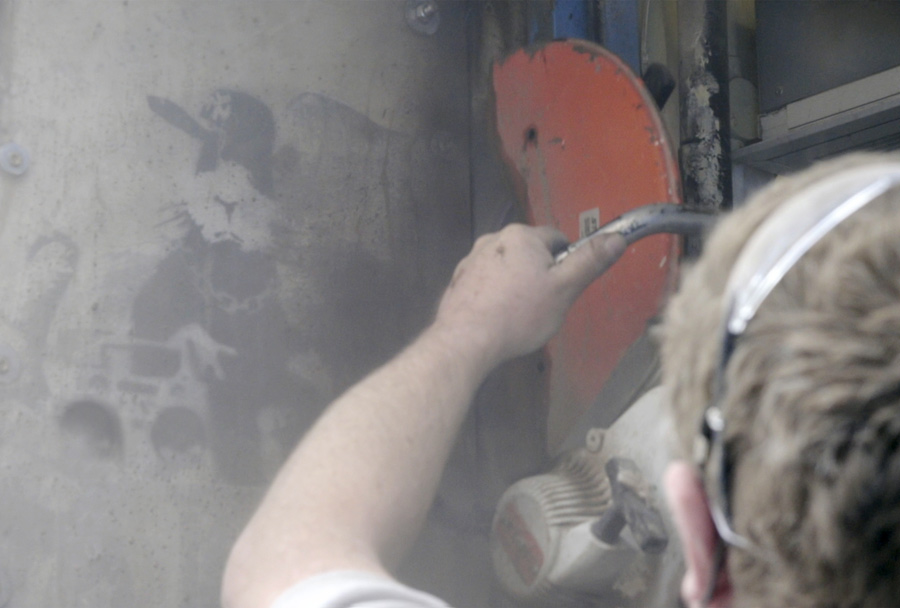
What has totally changed however, it’s my personal and professional way of dealing with street art. Before my involvement with the movie, I was mostly dealing with its theoretical aspects. Today I am more focused on bringing these ideas into the real world, in taking real actions. These are things that I believe are always important to discuss. I’ve seen this clearly during some Q&A at some festivals – but we cannot just talk if we want to develop ways to work with a narrative around street art that doesn’t whitewash it. I’m working on a few projects right now. I hope to have some news soon to share.
 BROOKLYN STREET ART LOVES YOU MORE EVERY DAY
BROOKLYN STREET ART LOVES YOU MORE EVERY DAY